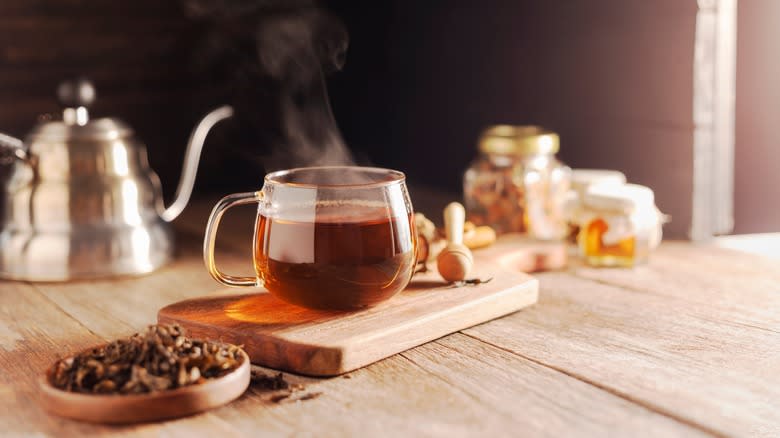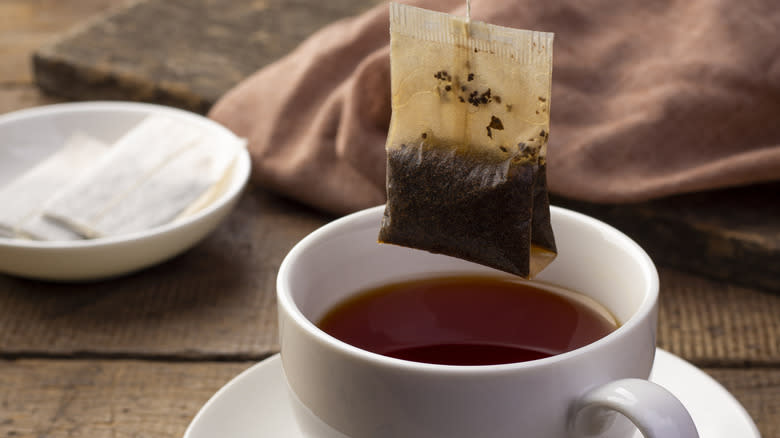How Many Times You Can Re-Steep Tea Without Compromising The Flavor

When it comes to beverages, tea is certainly one of the most beloved around the globe. With a wide variety of flavors, as well as a myriad of possible health benefits ranging from helping to lower blood pressure to reducing inflammation, it's no surprise why it's so popular.
Yet one gripe that tea drinkers still seem to have is the belief that all types of tea taste worse when they are steeped repeatedly, noting that the flavor of the tea becomes weaker and more diluted. This assumption is not always correct though as there is a finite number of times you can actually re-steep your tea while still enjoying the same great taste.
In fact, most varieties of tea like white, green, and oolong varieties, taste even better on their second or third round, as most of the initially bitter tannins have subsided, allowing subtler tasting notes to come through. Black tea generally is a one-and-done deal but, if it's strong enough, a second steeping is totally fair game.
If you are still worried, you can ensure you get the desired strength out of your tea by increasing the water temperature, extending the steep time, or doing a combination of the two for the best results.
Read more: 31 Popular Coffee Brands, Ranked
Ways To Use Old Tea Once The Flavor Is Lost

Once you have steeped your tea a handful of times and you are no longer satisfied with the taste, there's still no reason to get rid of the leaves. There are plenty of other inventive and useful ways to re-use tea bags and recycle tea leaves in the kitchen. For example, you can use a masala chai or lavender tea to impart a sophisticated flavor to your morning oatmeal recipe. Alternatively, you might add some black tea to a marinade to help tenderize the meat. You can even add tea leaves to baked goods like cakes and cookies for an elevated eating experience.
If you do not plan on re-using your old tea right away, be sure to store it properly in order to prevent it from growing mold or bacteria. The best approach is to allow the tea to cool completely, then to place the bag or leaves into an airtight container and store in the fridge. Alternatively, some recommend refrigerating the tea while keeping it in a glass of water in order to keep it moist. Regardless, if you see signs of spoilage like visible mold or an unpleasant smell, it's recommended that you dispose of the tea rather than try to re-use it.
Read the original article on Tasting Table

